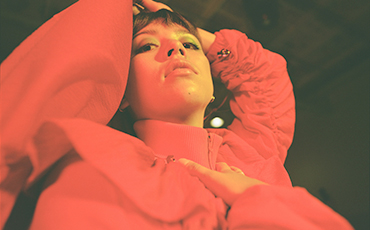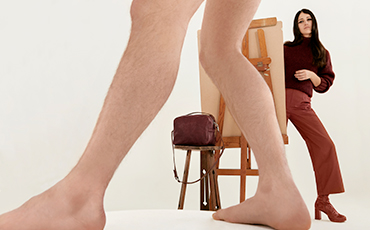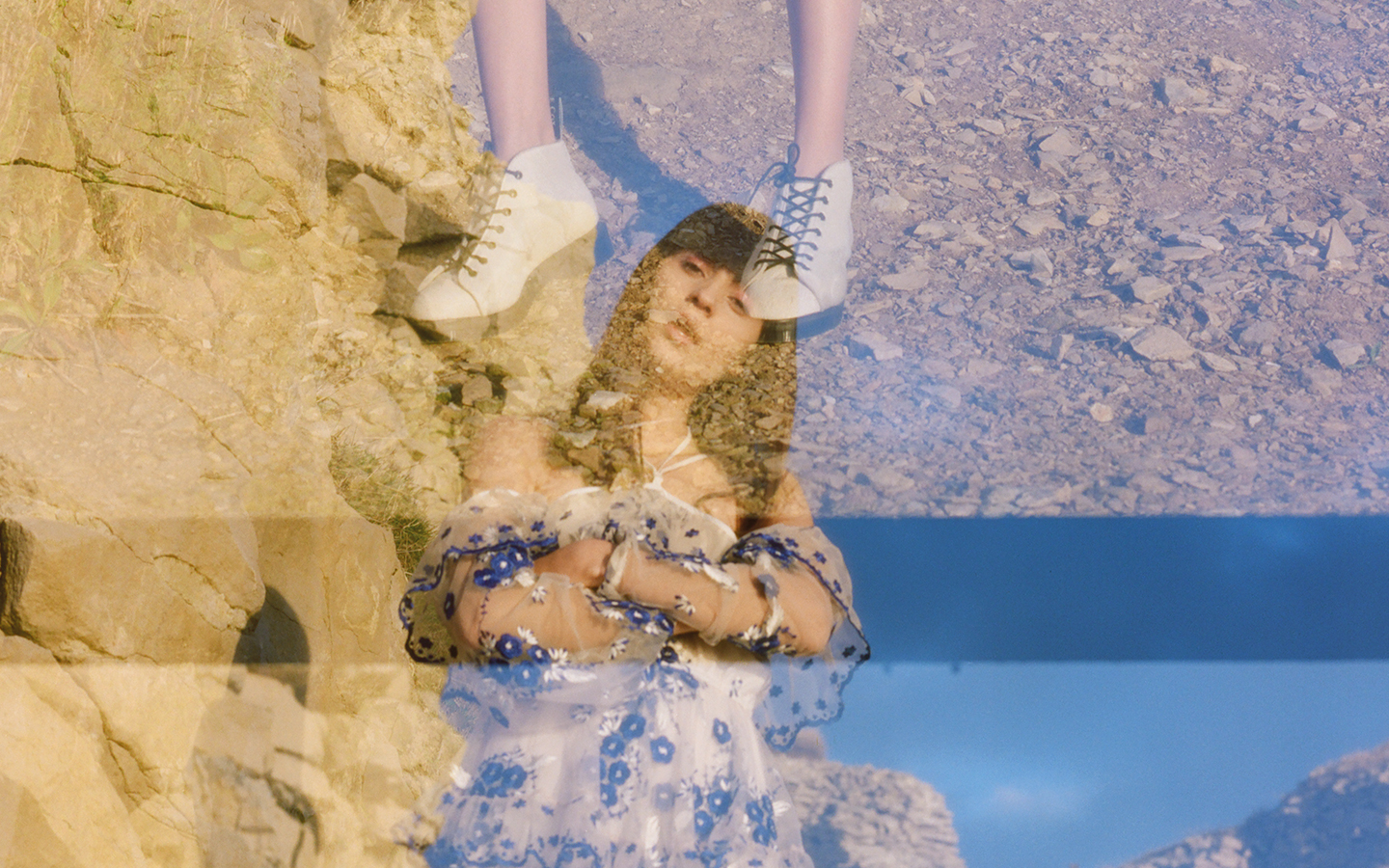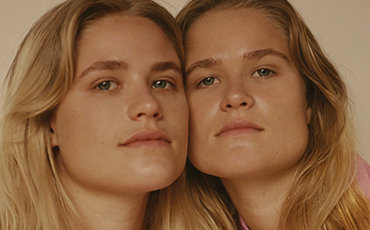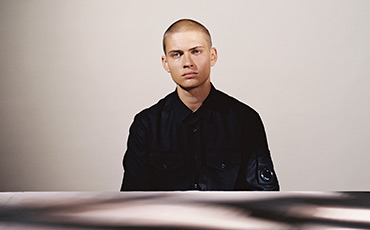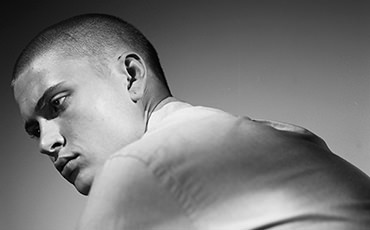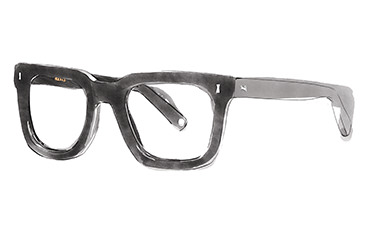03: Product
Steve Sanderson
The right side of the Oi Polloi brain speaks.
Words by Gary Warnett
Photography by Mike Sallabank
Â
Few modern clothing shops have made the impact on men’s dress codes like Manchester’s Oi Polloi. Its much-imitated buy-it-‘cos-you’re-into-it buying policy is rooted in a world of northern one-upmanship that’s not some swaggering stereotype. Since its original store’s doors opened in 2002, Oi Polloi hasn’t been only about good-old-days heritage, or solely into sportswear or just bang into basics. It’s a shape-shifting mass of good gear rather than being one category.
Retail has always been a rigorous exercise in multitasking – from buying, paying staff, making rent, hiring, firing and selling to growing pains or downsizing. To run a store in 2016 is to understand an increasingly fickle audience by maintaining a point of difference, not disappearing into a Google-invisible purgatory. It’s building a social-media following, honing user-friendly online retail and creating content that people actually want to read – then bringing all that together cohesively.
Founders and owners (and former hairdressers) Steve Sanderson and Nigel Lawson managed to make a manifestation of their own universe, where a Japanese brand dedicated to gardening, the perfect Breton shirt, that sweatshirt that does marl grey right, a French-made casual shoe with ageing feet in mind, and a feather-filled coat made for sub-zero temperatures all co-exist.Â
Their twice-a-year in-house fanzine Pica~Post knows enough about its subject matters to have fun with them instead of po-faced posing. Having opened in London’s Soho back in April of last year, the southern outpost of this mini-empire is stocked with the city’s tastes and needs in mind rather than directly cloning its elder brother.Â
At the heart of all Oi Polloi’s work are its owners’ experiences in British subcultures. While history would conveniently draw lines between this nation’s tribes – think mods, rockers, metallers, clubbers, terrace-dwellers and soul boys – Steve Sanderson knows that the reality was always a lot messier.
Â
[GW] Steve, do you think history has made things too clear-cut? Timelines seem to eliminate the multiple influences and cultural crossbreeding…
[SS] They’re out of sync! Growing up, punk was kicking in too. It was a right old mixed bag. I was listening to Talking Heads too – where did that come from? It must have been from older brothers being like, “Oh, have you heard this?†It was all so mixed up – my head got muddled with it all. I got to the point where my mates were into heavy metal and other mates who were big on football. I didn’t want to dress like the heavy metal kids but I liked listening to it, so I ended up listening to heavy metal while wearing Sergio Tacchini tracksuit bottoms but wearing a Lacoste. You’d go to biker pubs with your mates who were into heavy metal. It’s that early bit where you’re not quite there. Then you’d go to Manchester and get influences beyond the suburban town where you come from and meet other crowds – the ones who are slightly different. You’d end up wearing a kaftan, semi-flared cords and adidas Grand Slam. You were a right mess – all mixed up with a casual, hippy vibe.Â
[GW] A lot of local crazes were launched over here by people getting things wrong.Â
[SS] It’s like when you want a Barbour jacket and your mum brings back a wax jacket from the market hall… it’s not the same and you try to tell your mum. There was a Doc Martens knockoff called Doctor Pepper or something. It was not the same thing.Â
[GW] There’s this notion that northerners just had this one style in the 1980s – what different looks did you see?
[SS] I used to love going to different towns and seeing different looks. What was funny was when that Haçienda stuff kicked off; initially it was all the football crowds. You’d get all these different looks in there – all the kids from Stoke had their heads shaved. They had a super-sharp look with Stone Island. I mean, where did that come from? How did it become a thing within their crowd? The look must have been so strong that they all just followed suit. Leeds was a lot more flamboyant – Musketeer like, you know what I mean? [Laughs] They had the Blundstone boots with the steel toecap.Â
[GW] What was the Manchester look?
[SS] In Manchester you had Geese, so you had the destroy boys, this crowd of lads who looked like they had makeup on with long curly hair and with sleeveless kind of wetsuit jackets made of neoprene. It was really mad. What I blame it on was the shops in each city – each one only had a few good shops – and in Manchester you had Flannels, which was very much down the Stone Island, CP and proper kind of lad’s gear, and Geese, which was much more flamboyant and fashion. They were the driving forces. Leeds had its stores selling certain brands with a very localised market. Nottingham had the Paul Smith stores so they’d be head to toe in that and a bit into jazz too.


[GW] Was a lot of that because of local specialty stores?
[SS] They got annihilated didn’t they? Round our way there was a few outdoor stores because there was a thing for mixing functional sailing gear and outdoor stuff like Berghaus. That became part and parcel of what we grew up with, but I think some of that was weather dependent too. We lived somewhere always pissing it down so you want a waterproof jacket and you don’t want just any one either. So there was a functional element and a bit of that at the football, but in general it was more to do with wearing brands and labels and fitting in with that set of people. A lot of people dress to fit in don’t they? I prefer the ones who dress a bit different.Â
[GW] When do you think those differences began to stop?
[SS] There were scenes from that initial acid house/house underground scene to start with, but then that scene grew and became the thing that linked all the scenes together. That’s a pretty mad thing. That took the regionality out of it – people were travelling to go to things. I’d go travelling to the Boy’s Own parties and they were interesting because they were these mad parties in country houses. We’d been in disused warehouses covered in shit before and couldn’t get our heads round it! It was another level and we weren’t as exposed to it up here.Â
[GW] Do you think you gauge what people are into by what they wear nowadays?
[SS] Well, I think you can. I mean you can gauge who’s into mundane things by what they wear – ‘normal people’. I don’t go out as much any more, so the last few times I’ve been out I’ve realised that I don’t miss it. I had a prolonged going-out period – I mean I went out longer than most – so I kind of exhausted myself. I’ve kind of done all that so I know that I’m not missing anything – waiting all night for something to come round the corner. You know that anticipation that you have when you’re young? It’s not necessarily better and eventually you realise that you’re just chasing that fun. I think there’s a lot less of that going-out out these days, there’s a lot of staying in. So that curiosity – that chase – seems to have gone. It’s amazing when it’s right. These days everything’s a bit too run by big companies that know what they’re doing – the festivals and all that. It’s tough to find something interesting.Â
[GW] As a store are you always trying to avoid being summarised as a single thing?
[SS] Totally. I think it’s that thing where we’ve never seen ourselves as that. We used to sell vintage sportswear next to YMC. So yeah, there was some vintage but it was the way that we were dressing. We sold these vintage polo shirts because the brands wouldn’t let us have ‘em. Then by the time people said we were all about vintage sportswear we’d stopped doing it. We like hunting jackets with jeans and trainers, but we’re not heritage. We never have been!Â



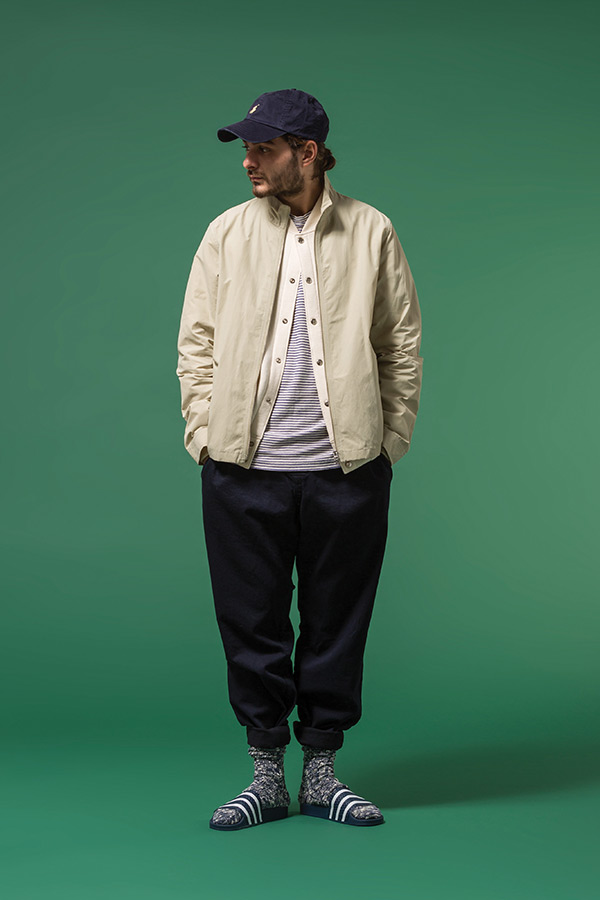
[GW] Do you get annoyed by being pigeonholed as a heritage store?
[SS] We always want to drop things because of that but we know we can’t always do that. They’re lazy – misquoting and all that stuff. We like sportswear but it’s about mixing up stuff that’s new, stuff that’s old and stuff that’s classic. I like ageless things – a Harrington jacket is a good example. It’s classic menswear but it can be sporty too. You can make it work with all kinds of things.
[GW] Do you see similarities between what Manchester kids and New York kids are wearing around the same time, but oblivious of each other’s existences?
[SS] It’s that same aesthetic. I kind of love all them parallels between youth culture in New York and the UK. You look at the types of things happening and the crossovers are mega on certain products.
[GW] In the internet age it’s tough to focus online – we have access to everything, but it’s almost too much choice. I subscribe to Apple Music and have access to infinite albums but just listen to Hall & Oates on it.Â
[SS] It’s tricky to hold attention. It’s a weird thing – we like having fun with our tone and we hope it attracts people who like that kind of thing too. It gives us a feeling that we’re attracting people we’ve got a connection to. They get it. It sort of comes from us initially and those interests. There are so many companies out there that create a bit of content, blah, blah, blah. You need to engage with the right people. You look at some websites and think, did you read this or was it just about filling spaces with text?Â
"It's like when you want a Barbour jackets and your mum brings back a wax jacket from the market hall... it's not the same."
[GW] As a retailer you’re obliged to be a content creator now too.
[SS] But some of it is just listing stuff. There’s no reason or rhyme. What’s so good about that?Â
[GW] Is getting attention online a challenge?
[SS] There’s a very low attention span now. I remember when there were three or four TV channels! But with all that choice now you end up finding a couple of things that are good. You get bored of stuff very quickly and the internet is like that. It’s done before it happened! I think that’s interesting. Trends blow up and blow out at a ridiculous rate. But if you’re focused, you can go through all these weird wormholes online and learn a lot.Â
[GW] Does trying to give a store a specific personality mean making certain sacrifices?
[SS] Stores that have a personality where you can see what they’re about – that’s what it’s all about. Denim store –trainer store – whatever it is, maintaining that thing and that aesthetic that people can get their head around will attract a person. And you’re not really bothered about attracting everybody else. Trying not to do things for commercial reasons creates a fine line when you’ve got a business and it grows to a certain size. If you had a pot of money you’d make those statements all day long, but you can’t when you’ve got to pay wages and the rent, you’ve got to make money. We never did basketball stuff and that gear because it wasn’t us, but we could have sold hundreds. We kind of cut our noses off.Â

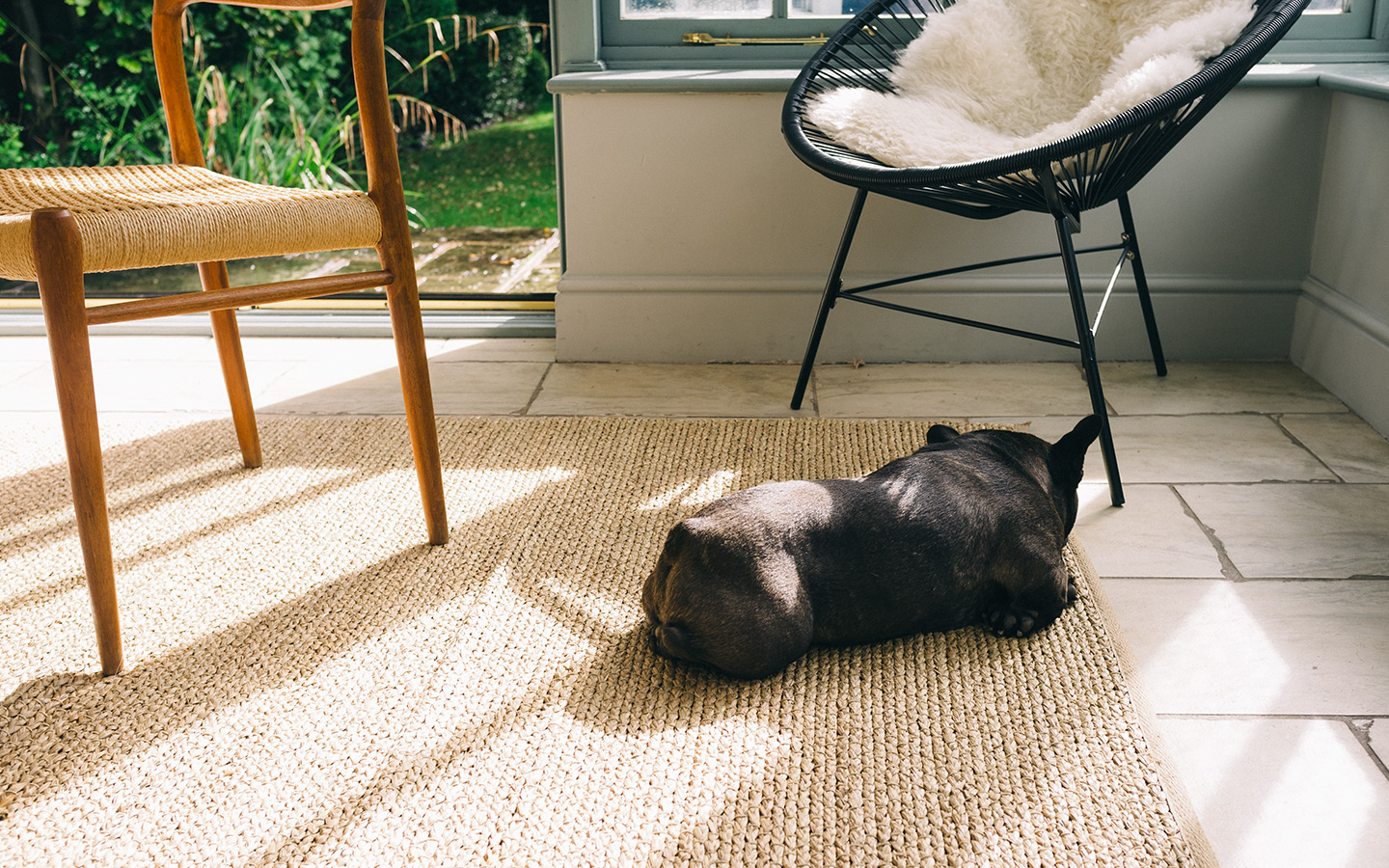
Steve’s multiple universes inform everything he does with Oi Polloi. He and his Oi Polloi partner Nigel Lawson have gone on to shape menswear as we know it. Their store in Manchester’s Northern Quarter now commands sartorial respect and influences buyers all over the world.



